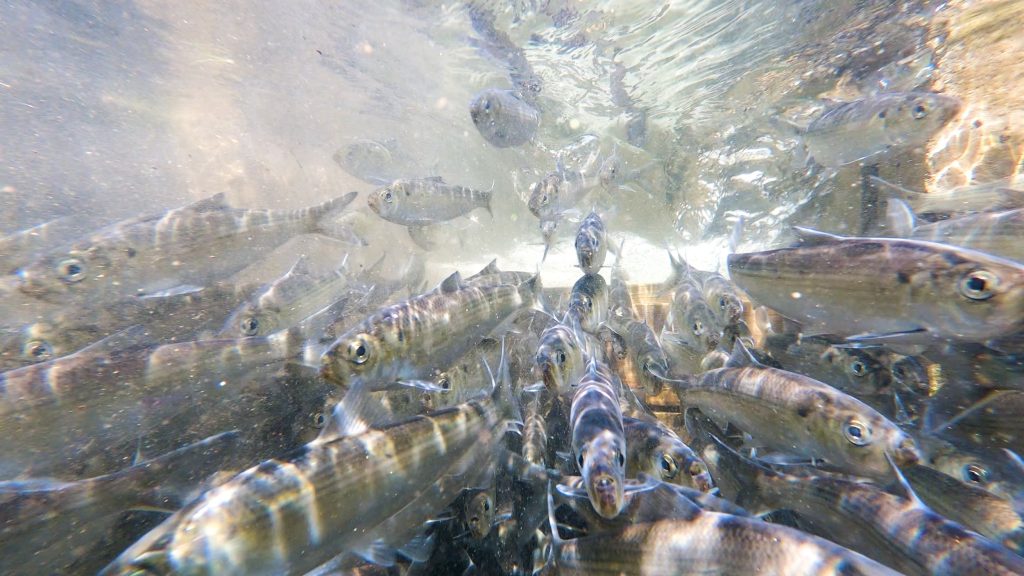Alewife
Species Description

Alewife Alosa pseudoharengus
Blueback herring Alosa aestivalis
also known as river herring, gaspereau, sawbelly, kyak
Wild.
Alewife and blueback herring are members of the herring family, which also includes shad. Alewife, blueback herring, and shad are collectively called “river herring,” but should not be confused with the Atlantic herring, which is strictly a marine fish. Alewife and blueback herring look very similar: Alewives have larger eyes, a silvery body, and a pale belly, while blueback herring have smaller eyes, a darker bluish back, and a dark belly. They are sea-run or anadromous species: each spring, they return from the ocean to freshwater rivers and lakes to spawn.
Season
April through June.
For the most recent updates on fishing alewife in Maine waters, visit Maine Department of Marine Resources (DMR).
Status
As with most other species of sea-run fish, alewife and blueback herring populations are much depleted from their historic levels and are the focus of habitat restoration efforts coastwide. Maine rivers have some of the healthiest and largest runs, some of which support commercial fisheries (primarily for lobster bait). Alewife populations in some watersheds are supported by stocking adult fish taken from nearby rivers. The Atlantic States Marine Fisheries Commission is currently assessing coastwide population status.
Regulatory Authority
The DMR, as well as those coastal municipalities with rights to river herring resources, cooperatively manage harvests on individual rivers. Each town must submit an annual harvesting plan to DMR for approval that includes measures to assure conservation of the resource.
The Atlantic States Marine Fisheries Commission oversees management of the coastwide population.
Harvest Method
Alewives and blueback herring are harvested by hand as they ascend freshwater streams and rivers, with weirs, seines, cast nets, and dip nets. See the vessel and gear guide for more information.
Recreational Harvest
25 river herring per person per day, for personal use only, permitted 6:00 a.m. Sunday to 6:00 a.m. Thursday (fishery closed Thursday through Saturday).
Recreational harvesting is not allowed in streams with commercial harvesting leases, unless specifically stated in their management plan. If there is a commercial harvest, please check with the municipality to learn if recreational harvest is allowed and when.
Health Benefits & Risks
Alewife and blueback herring are similar to Atlantic herring (sardines) and are good sources of protein and omega-3s. Use caution when eating as alewife and blueback herring contain numerous small bones.
View the 2021 US Food and Drug Administration’s fish consumption guidelines.
Buying & Preparing
A small number of Maine harvesters smoke alewives and blueback herring, producing a traditional delicacy sometimes known as “bloaters.” These smoked fish may be available locally, especially during the spring run, and offer a rich, savory flavor reminiscent of old-fashioned preservation methods.
Recipes
Certifications & Verifications
Links
- More on alewives and blueback herring from the Department of Marine Resources
- Alewife Harvesters of Maine
- Alewife info from Downeast Salmon Federation
- Alewives: Feast of the Season, an article from Maine Boats, Homes & Harbors Magazine (PDF, 996 kb)
- Watch the alewife run at the Damariscotta Mills Fish Ladder
- Read about river herring in The Run by John Hay.
- NOAA Fisheries Species Directory
